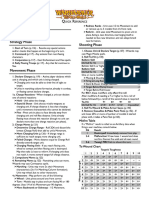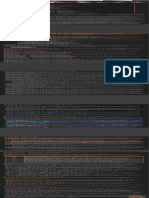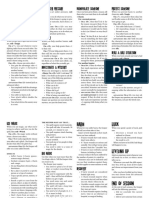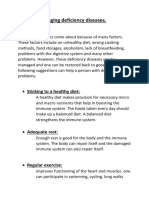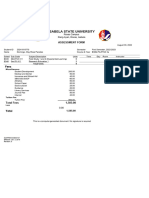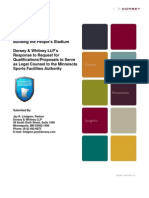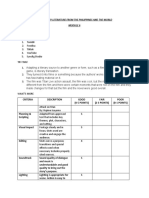100% found this document useful (1 vote)
5K views4 pagesHH 3.0 Quick Reference
The document outlines the 3rd edition rules for Warhammer's Horus Heresy, detailing the turn sequence, tactical statuses, core reactions, and various phases of gameplay including movement, shooting, and combat. It includes specific rules for resolving actions, penalties for tactical statuses, and the mechanics of challenges and terrain effects. Additionally, it provides tables for hit tests, vehicle damage, and the effects of psychic powers, ensuring players understand the intricacies of gameplay.
Uploaded by
Anatoly ZamkovoyCopyright
© © All Rights Reserved
We take content rights seriously. If you suspect this is your content, claim it here.
Available Formats
Download as PDF, TXT or read online on Scribd
100% found this document useful (1 vote)
5K views4 pagesHH 3.0 Quick Reference
The document outlines the 3rd edition rules for Warhammer's Horus Heresy, detailing the turn sequence, tactical statuses, core reactions, and various phases of gameplay including movement, shooting, and combat. It includes specific rules for resolving actions, penalties for tactical statuses, and the mechanics of challenges and terrain effects. Additionally, it provides tables for hit tests, vehicle damage, and the effects of psychic powers, ensuring players understand the intricacies of gameplay.
Uploaded by
Anatoly ZamkovoyCopyright
© © All Rights Reserved
We take content rights seriously. If you suspect this is your content, claim it here.
Available Formats
Download as PDF, TXT or read online on Scribd
/ 4





